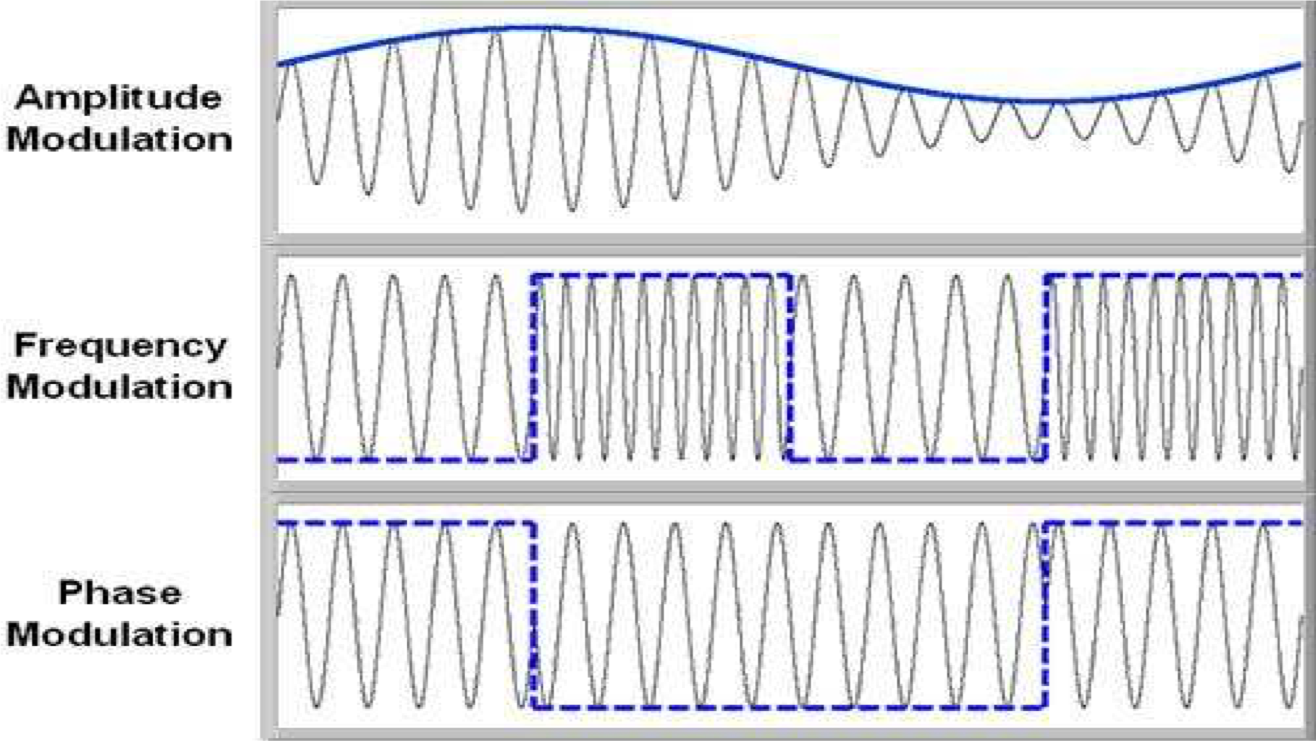The data, in terms of 0's and 1's needs to be sent on a carrier wave at a specific frequency. For example Vodafone use the frequencies between 925.1 to 930.1, split into 200kHz channels to send their data. To achieve the sending of the data, a characteristic of the carrier wave needs to be altered in order to distinguish the 0 for a 1. There are 3 characteristics that can be altered namely the amplitude, frequency and the phase.
Amplitude Modulation The carrier wave is sent with two different amplitudes, one represents the 0 and another the 1. In order for the receiver to decide the data at least 1/2 a wavelength must be transmitted. This puts a limit on the maximum amount of data that can be sent. So at 900MHz there is a limit of 1.8Gbps pieces of data that can be sent. However fast amplitude modulation is not reliable.
Frequency Modulation The carrier wave is sent with two different different frequencies, one represents the 0 and another the 1. These frequencies of necessity must be small changes to be able to be sent within the available bandwith of the channel. However, the difficulty for for the receiver is that the smaller the change, the harder it is to reliably read the data.
Phase Modulation On their own, AM and FM are too slow to be detected at the high speeds needed in mobile phone communications. It is difficult to transmit more than 2 or 4 bits per wavelength. Phase Modulation allows for more bits to be sent per carrier wave. BPSK (Binary Phase Shift Keying) shifts the phase of the wave by 180deg; allowing 1 bit to be sent per wavelength. This is a large change and easier for the receiver to reliably detect the change. QPSK (Quadrature Phase Shift Keying) is a method to change phase of a wave by 90deg, 180deg, 270deg thus allowing 2 bits to be sent per wave. It is possible, in more complex and sensitive systems, to use 8 phases (3 bits) or even 16 phases (4 bits) per wave. The latter will be have phase changes of 22.5deg which now becomes difficult to detect.
*u* ©mobilephonetechnology.co.uk all rights reserved 2017- 2026




